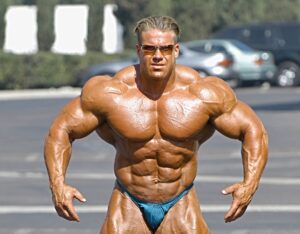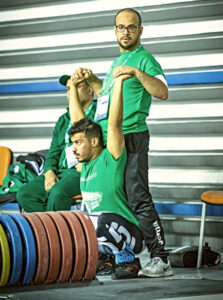
3 Steps to Healthy Shoulders
Resolving the most common causes of shoulder pain
The bench press is the most popular weight training exercise, no question. Unfortunately, those who perform it year-round at a high level often develop shoulder pain. Sometimes a short layoff is all that is needed to get your training back on track, but often the pain will come back. Charles R. Poliquin had some answers.
The Strength Sensei found that Iron Game athletes who came to him with shoulder pain, particularly powerlifters, often shared three common characteristics, as follows:
- Soft-Tissue Adhesions. Over time, adhesions can develop between muscle groups, within a muscle, or between the nerve and the muscle. For those who emphasized the bench press, the Strength Sensei said adhesions often developed in the subscapularis. To resolve adhesions, one of the most effective methods is Active Release Techniques Treatment®, a soft-tissue management technique developed by Dr. Mike Leahy and a technique that the Strength Sensei learned and practiced.
- Flexibility Issues. The Strength Sensei believed stretching the shoulder girdle muscles was essential to keeping the shoulders healthy. Because many athletes will skip stretching if prescribed at the end of a workout, he would have his athletes stretch the upper body muscles during the rest periods of a leg workout.
 Stretching the shoulder girdle muscles can help keep your shoulders healthy. (This photo by Viviana Podhaiski, LiftingLife.com; lead photo by Miloš Šarčev)
Stretching the shoulder girdle muscles can help keep your shoulders healthy. (This photo by Viviana Podhaiski, LiftingLife.com; lead photo by Miloš Šarčev)
And now the biggie!
- Muscle Imbalances. A muscle can only contract or relax. To produce movement, most muscles come in pairs so that one muscle pulls the body part in one direction, and the other pulls it in the other direction. Consider the relationship between the biceps and the triceps. The biceps move the forearm toward the shoulder, and the triceps move the forearm away from the shoulder.
An imbalance between these muscle pairs can increase the risk of injury. For example, the Strength Sensei found that the skiers on the Canadian National Team often displayed relatively weaker hamstrings compared to their quads at the end of the season. As such, he would usually start their off-season training with a hamstring specialization program.
For those who focused on the bench press extensively, the Strength Sensei often found that the muscles that produced external rotation of the humerus (teres minor and infraspinatus) were relatively weak. This imbalance can produce pain in the superior, anterior portion of the upper arm.
Besides preventing injuries, correcting muscle imbalances can improve athletic performance. About 25 years ago, the Strength Sensei worked with pro hockey player Jim McKenzie. When tested on a 14-inch close grip bench press, he could lift 280 pounds but could only use eight pounds for three reps on a single-arm external rotation exercise for the shoulders. For the next three months, McKenzie did no bench presses. Three months later, he did 35 pounds in the rotation exercise and bench pressed 331 pounds with a close grip.
Address these three issues associated with shoulder pain, and don’t be afraid to press on! (TSS)
